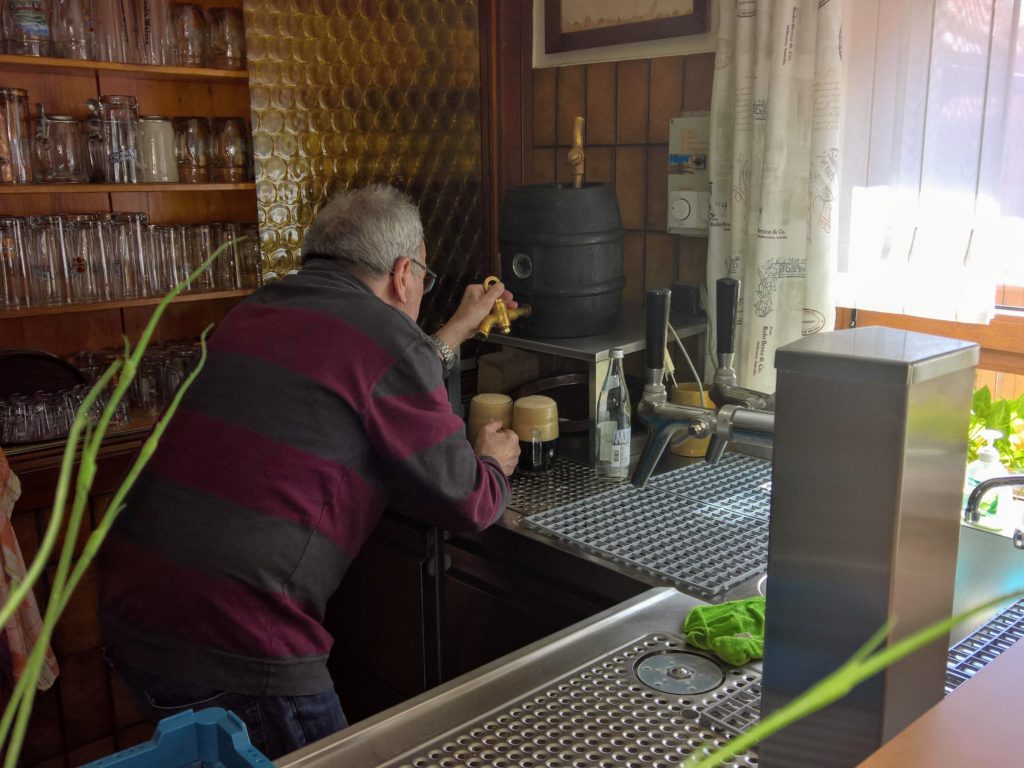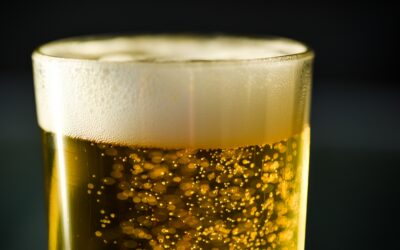While the heritage of cold-conditioned beers is not as many-layered as that of ales, there appears nonetheless to have been a tradition of lagering some beers that goes back to the 15th century, and it is likely that at least some of these beers will have been conditioned by self-selecting lager yeast. At least three of these styles warrant a closer look.
Another term that appears is Zwickelbier (or Zwicklbier). Originally coined to describe a type of Kellerbier in which the protein haze has not settled. Its usage has since spread to include a wide variety of hazy lagers. As most types of haze in beer have a neutral character, they tend to dilute a beer’s flavour, so a typical Zwickelbier will have less be less flavourful than its base beer – or if you prefer the marketing line, smoother.
Kellerbier
Of the 200+ small independent breweries found in Oberfranken (Upper Franconia), more than half base their businesses on their version of a local speciality that is fermented with a lager yeast and then conditioned in the brewery cellar for a few weeks. Kellerbier can be any colour from straw to dark amber and will tend to taste distinctly beery but a bit unrefined. When racked unfiltered into a vertical cask, called a Holzfaß, and served by gravity, without additional carbon dioxide, it is closer to British cask ale than any other beer style, though any good bar will be sure to finish the cask on the day it is broached.

Kellerbier served directly from a Holzfaß at Brauhaus Gradler in Oberfranken, Germany (photo: André Brunnsberg)
Rauchbier
Literally ‘smoke beer’, this now much imitated style was until recent years a speciality of the town of Bamberg, the UNESCO-listed beer capital of Oberfranken. A few are as unsubtle as a heavily smoked German ham, but most a lot more subtle while others include but a wisp of woodsmoke against a background of a solid amber or brown lager. The style is a hang-on from the days when all malted barley was dried in wood-fired kilns, leaving it with smoky and burnt residues. By 1795, the arrival of coke ovens from England in Germany enabled maltsters to produce smoke-free malt, a revolution that spread rapidly. Some brewers in Bamberg stayed with the old ways, some still smoking their own malt to this day, though most producers source their smoked malt from the city’s world-renowned maltsters, Weyermann’s, who now export it internationally.
Zoigl

Schafferhof in is one of the many Zoigl brewing and serving restaurants in Windischeschenbach.
Not so much a beer style as a hang on from a bygone era is the tradition of the communal beer brewhouse. Known to have existed in Bohemia as early as the 11th century, the best known are found in the Oberpfalz part of eastern Bavaria, not far from the Czech border. These Zoigl breweries are each owned by a co-operative, whose members may take turns being in charge of brewing. When the brew is completed, the wort is distributed locally to bars, hotels and private houses, where it is fermented and conditioned in individual batches. The end-products from the same brew can be noticeably different. A typical Zoigl beer will taste like a herbal Kellerbier with some lambic-like edges.
Also, for ales that go on to be lagered, see Altbier and Kölsch




